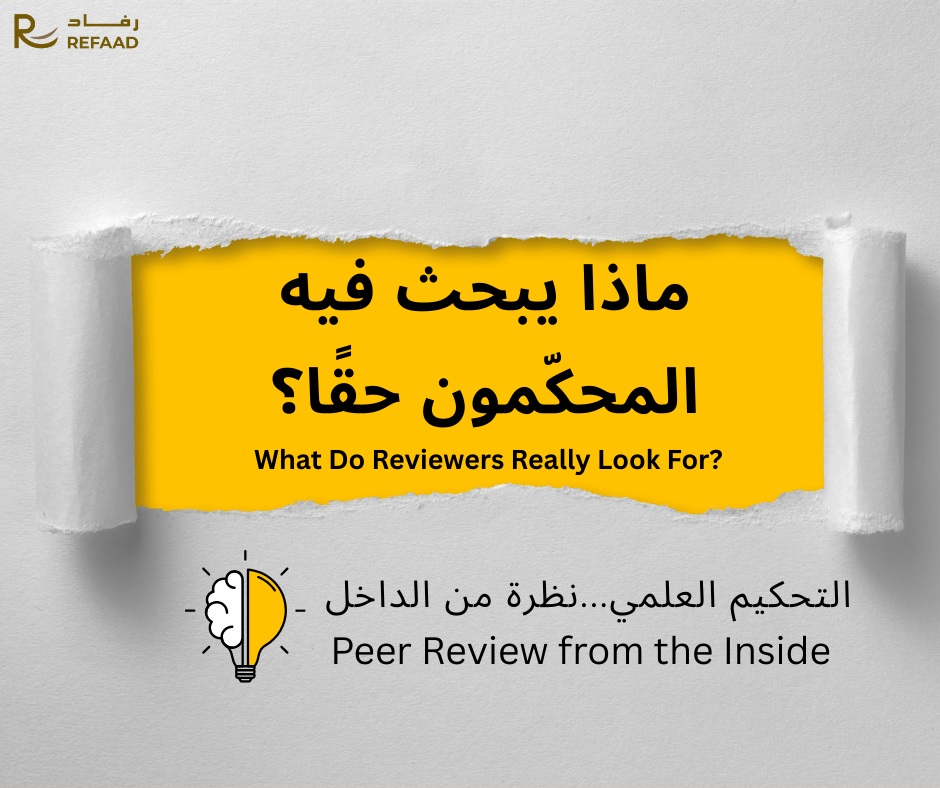Peer Review from the Inside: What Do Reviewers Really Look For?

Author: Refaad
Date: 22/06/2025
4298Many researchers believe that the quality of the research itself is enough to get it accepted in a peer-reviewed journal. However, the truth is that rejection doesn’t always stem from weaknesses in the content or idea, but sometimes from small details that the researcher might overlook, which make all the difference in the eyes of the reviewers.
In this article, we take you behind the scenes of the peer review process. What do reviewers look for? What questions do they ask themselves when reading your paper? And how can you prepare your paper to pass the “review phase” successfully?
First: The Quality of the Idea… But Not Only That
The reviewer’s first question is: "Does this paper add something new?"
If the idea is repetitive or doesn’t contribute any clear value to the field, the result is usually a quick rejection, even if the writing itself is flawless.
Second: Is the Paper Written in Proper Academic Language?
Reviewers pay a great deal of attention to the academic style. Some of the most common mistakes are:
· Excessive repetition.
· Weak writing style.
· Literal or awkward translation.
Writing your paper in a clean, academic language leaves a strong first impression and increases your chances of acceptance.
Third: Are the References Up-to-Date and Reliable?
Your research might be excellent, but if you rely on outdated or unreliable references, it will make your paper less suitable for publication. Reviewers look for:
· A balance between local and international references.
· Recent references (ideally from the last 5 years).
· Use of reliable databases and sources.
Fourth: Methodology is the Key to Trustworthiness
Peer review doesn’t only depend on the results but also on how you arrived at those results. Therefore:
· Be clear about your methodology.
· Explain the research tools and result analysis objectively.
· Avoid bias or exaggerating data interpretation.
Fifth: Formatting and Adherence to Journal Guidelines
A great paper may be rejected simply because it doesn’t follow the journal’s formatting guidelines!
Some reviewers view a lack of adherence to the submission guidelines as a sign of carelessness or inexperience.
Finally: Choosing the Right Journal
Choosing the right journal is a strategic decision, not a random one.
Many researchers send excellent papers to journals that are not aligned with their field, which leads to immediate rejection. Therefore, it is recommended to:
· Read the journal’s scope and objectives.
· Review past issues to understand the types of papers published.
If you’re looking for reliable peer-reviewed journals in various fields, platforms like Refaad for Studies and Research offer a range of quality journals, adhering to the highest peer review standards.
Peer review is not just an obstacle; it’s a gateway to publishing your paper in prestigious platforms. Understand how reviewers think, and you’ll be able to navigate the "bottle neck" with confidence.
Do you have a paper ready for submission? Revisit this article, and write your next submission with the mindset of a reviewer… not just as an author.
